How to use Kinesiology Taping for Shoulder Subluxation
Filed under Treatments
How to us Kinesiology Tape for Shoulder Subluxation
By: Tayler Roost
What is shoulder subluxation?
Shoulder subluxation is a dislocation of the glenohumeral joint. This can be classified as traumatic, non-traumatic, or neurological. A traumatic shoulder subluxation can be caused by contact sports or repetitive shoulder movements. A non-traumatic shoulder subluxation can be caused indirectly by another injury such as a rotator cuff tear. A neurological shoulder subluxation can stem from diagnoses such as a stroke, spinal cord injury, or brachial plexus injury. Whatever the category of subluxation is, it affects the person’s ability to functionally use their arms, especially during lifting, flexing, and abducting their affected shoulder.
How to know when someone has shoulder subluxation?
The person will usually present with pain in the shoulder, loss of range of movement, and a palpable gap between the humeral head and the acromion. The subluxation is typically measured in finger width. Special tests can be completed as well to identify if there is a subluxation such as the load and shift test, apprehension test, and relocation test.
How to use kinesiology tape for subluxation support:
- Cut 3 strips of kinesiology tape into 6in-8in pieces with rounded corners

- Anchor at the top of the deltoid
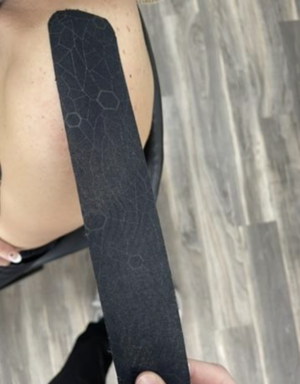
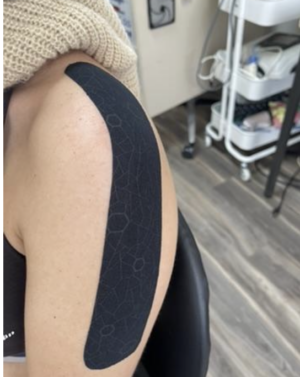
- Add a second piece, anchoring at mid-arm, stretching to approximately 30-50%, and attaching at the upper trapezius with shoulder approximated
- Add a third piece following the same steps as above anchoring at mid-arm, stretching to approximately 30-50%, and attaching at AC joint area with shoulder approximated
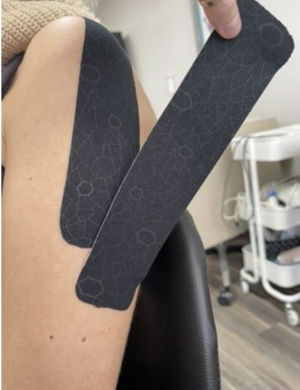
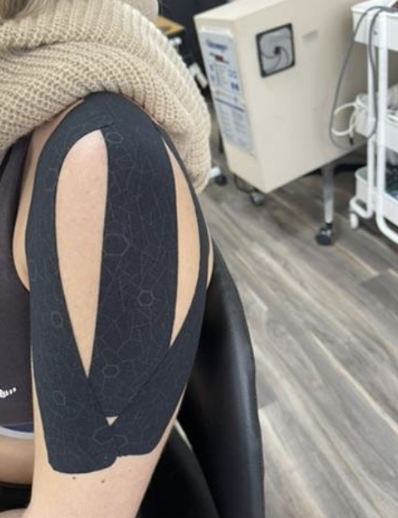
- Rub to adhere and they should be good to go! Ensure skin integrity and patient satisfaction after application.
Reference:
Chang, K., & Vitoonpong, T. (2023). Shoulder subluxation – statpearls – NCBI bookshelf.
National Library of Medicine. https://www.ncbi.nlm.nih.gov/books/NBK507847/
1 Comments
Leave a Comment
More To Read
Do you know the difference between an Electromyography (EMG) and a Nerve Conduction Velocity (NCV) Study?
Do you know the difference between EMG and NCV (an Electromyography and a Nerve Conduction Velocity Study? The term nerve test is usually a broad term that typically indicates both an Electromyography (EMG) and a Nerve Conduction Velocity (NCV) study (EMG vs NCV). An EMG looks at the electrical signals your muscle makes when at…
Read MoreArthrodesis vs Arthroplasty in Thumb CMC OA
Piacenza A, Vittonetto D, Rossello MI, Testa M. Arthrodesis Versus Arthroplasty in Thumb Carpometacarpal Osteoarthritis: Impact on Maximal Voluntary Force, Endurance, and Accuracy of Pinch. J Hand Surg Am. 2021 May 24:S0363-5023(21)00199-4. doi: 10.1016/j.jhsa.2021.03.023. Epub ahead of print. PMID: 34045112. The Skinny: This was a retrospective study based on a convenience sample of individuals who…
Read MoreHand Function in Chemotherapy-Induced Peripheral Neuropathy: A Rapid Review
Osumi, M., Sumitani, M., Abe, Hiroaki, A., Otake, Y., Kumagaya, S.-I., & Morioka, S. (2019). Kinematic evaluation for impairment of skilled hand function in chemotherapy induced peripheral neuropathy. Journal of Hand Therapy. (32)1, 41-47. https://doi.org/10.1016/j.jht.2017.06.003 By: Rita Steffes The Skinny: Chemotherapy has many lasting side effects (one of which is hand numbness after chemotherapy), with…
Read MoreSign-up to Get Updates Straight to Your Inbox!
Sign up with us and we will send you regular blog posts on everything hand therapy, notices every time we upload new videos and tutorials, along with handout, protocols, and other useful information.


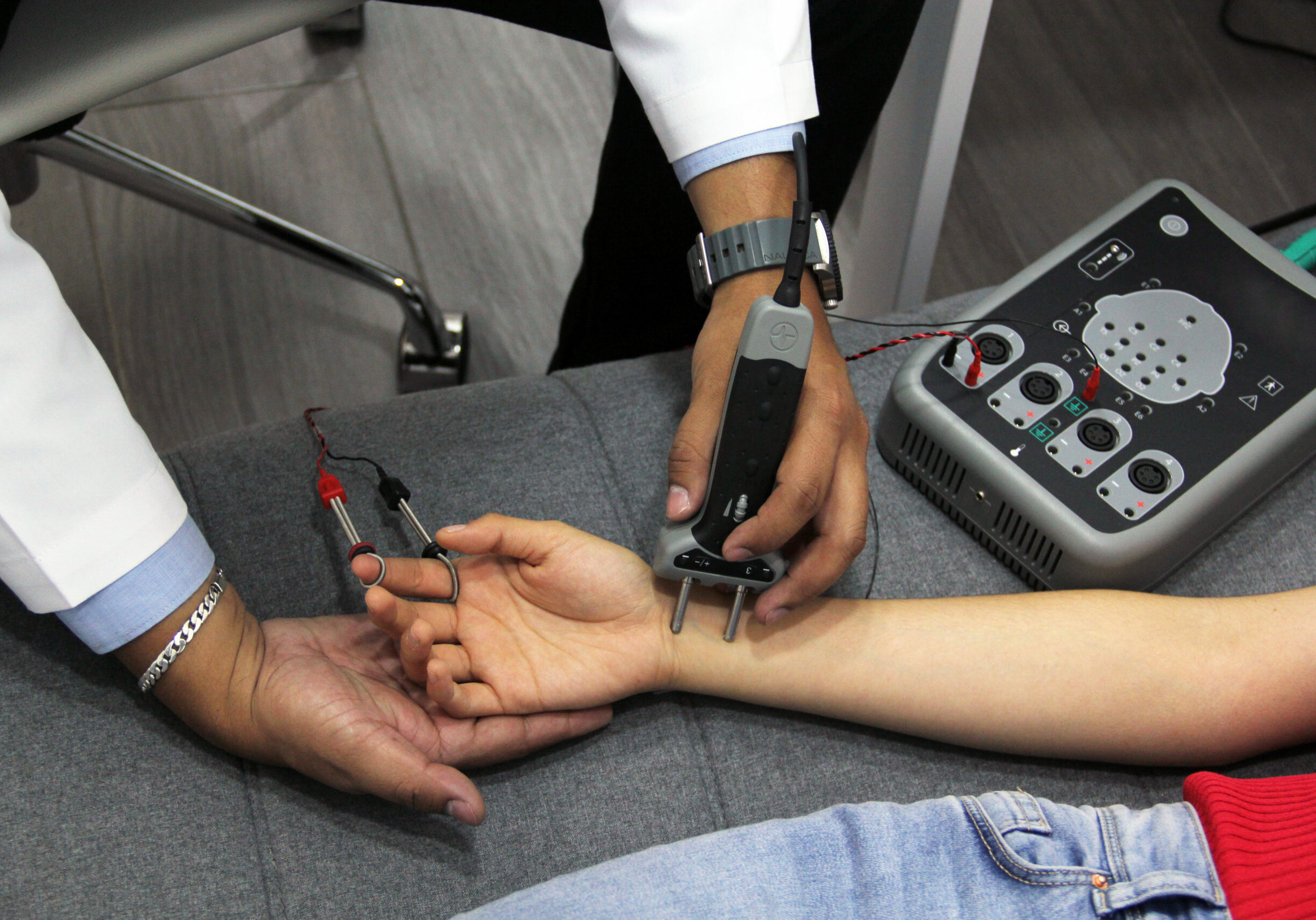



This article on kinesiology taping for shoulder subluxation is very informative. I appreciate the detailed instructions and emphasis on proper assessment. The examples and videos provided make it easy to understand and implement. Thank you, Hand Therapy Academy, for this valuable resource!